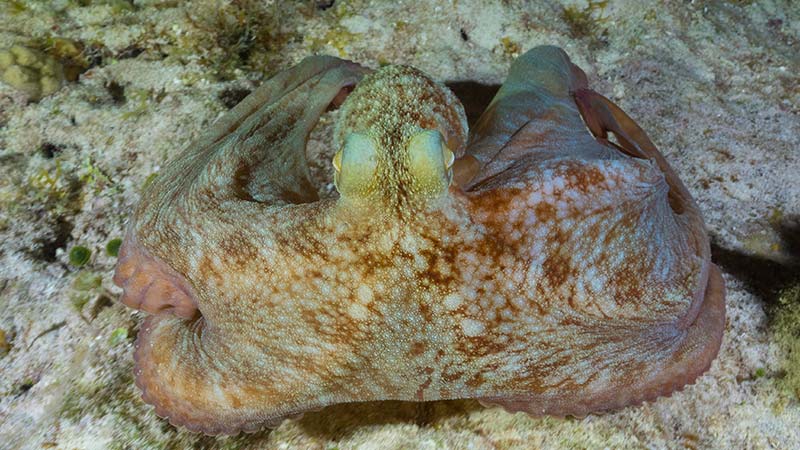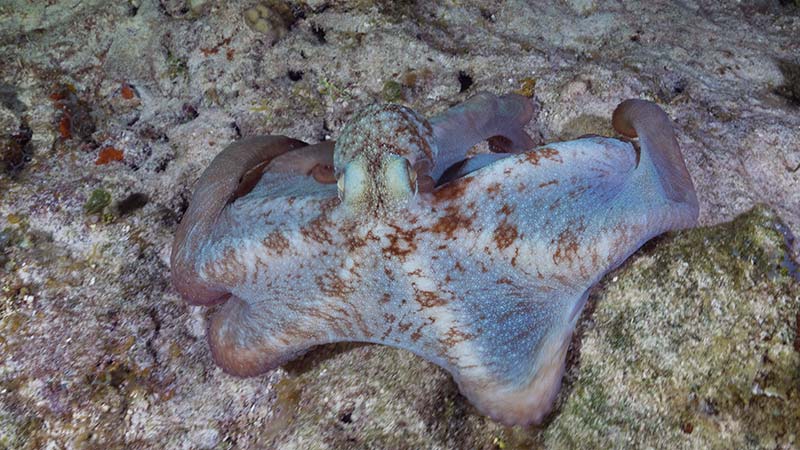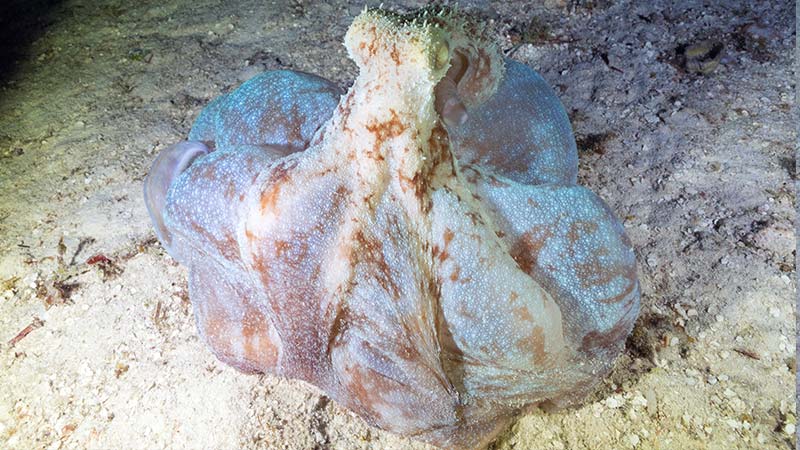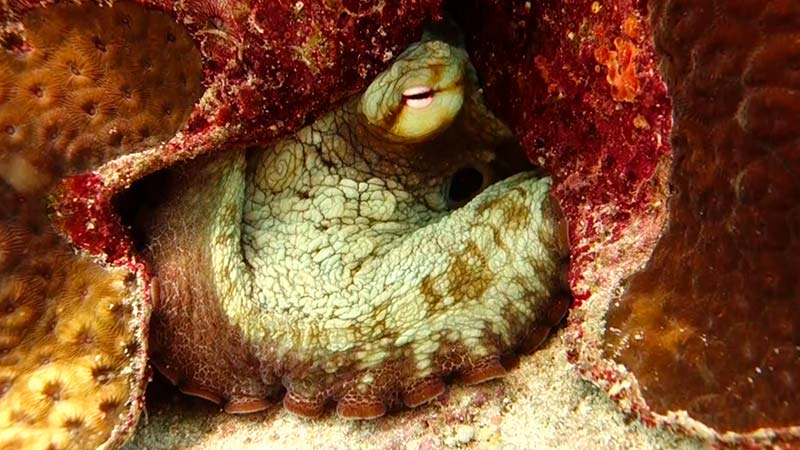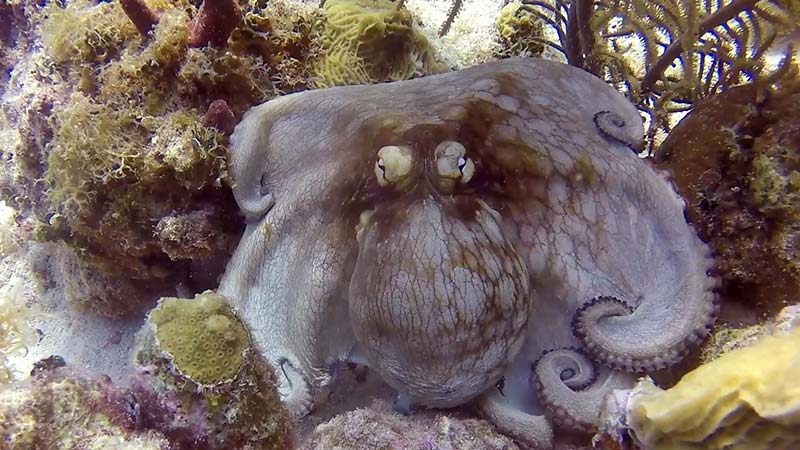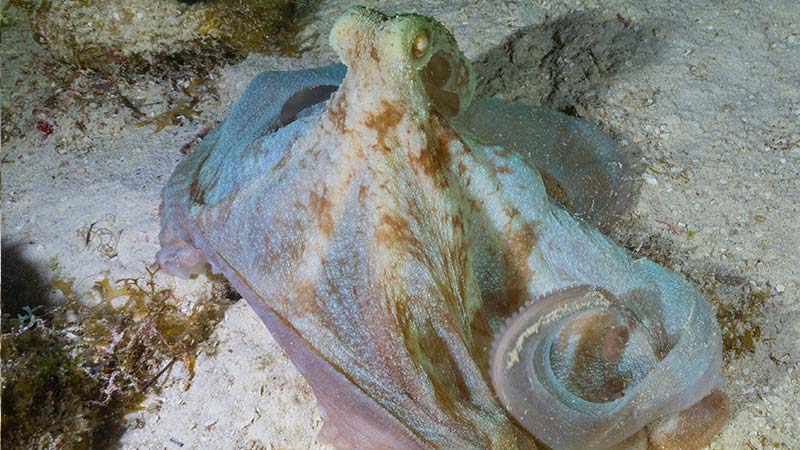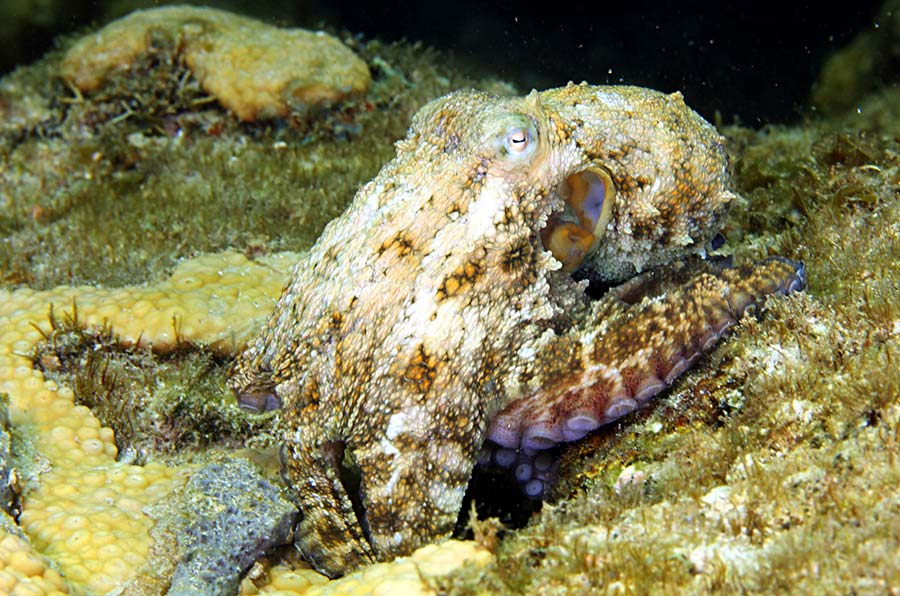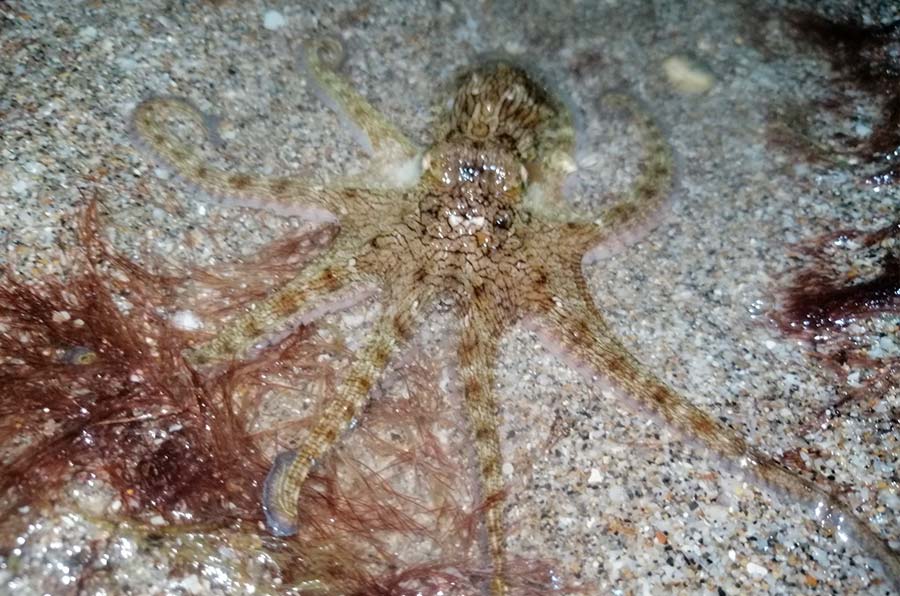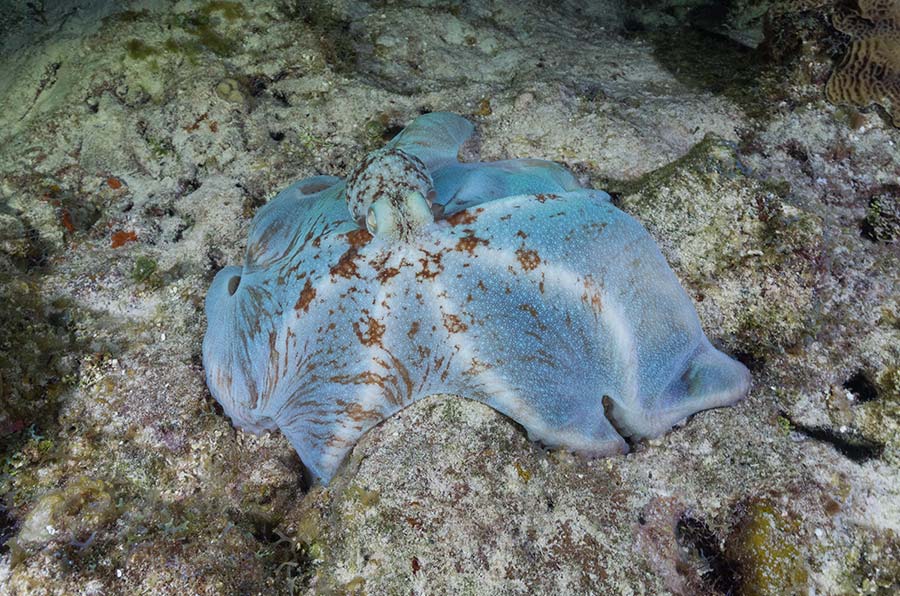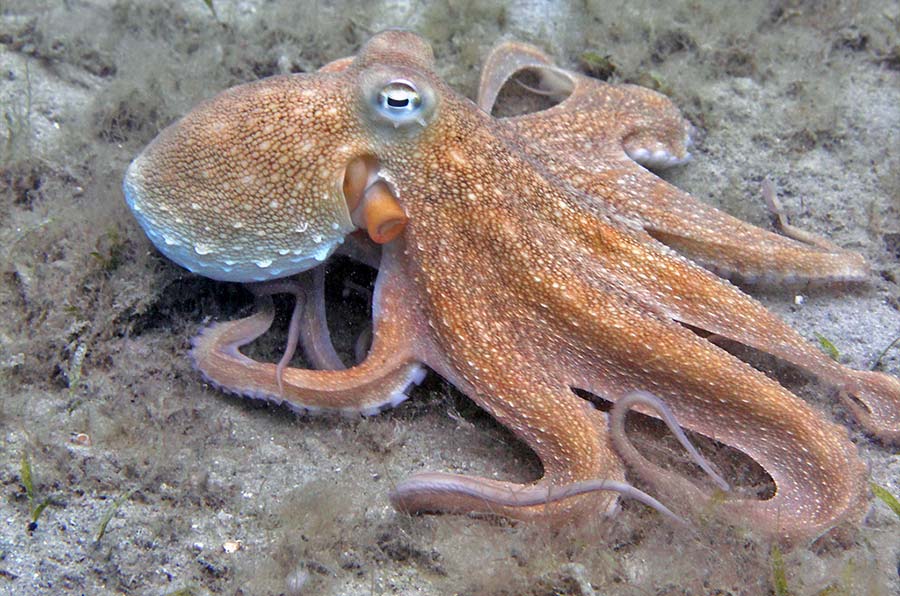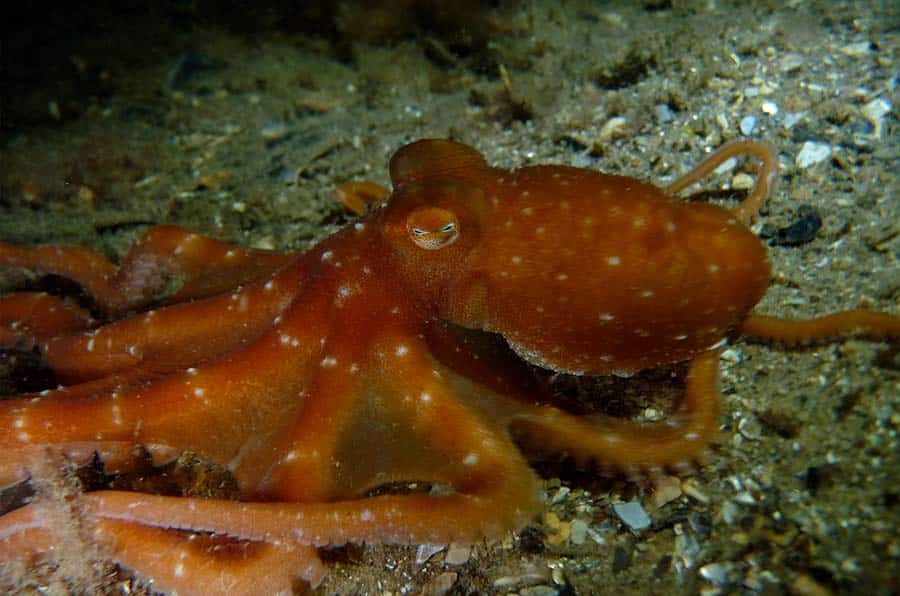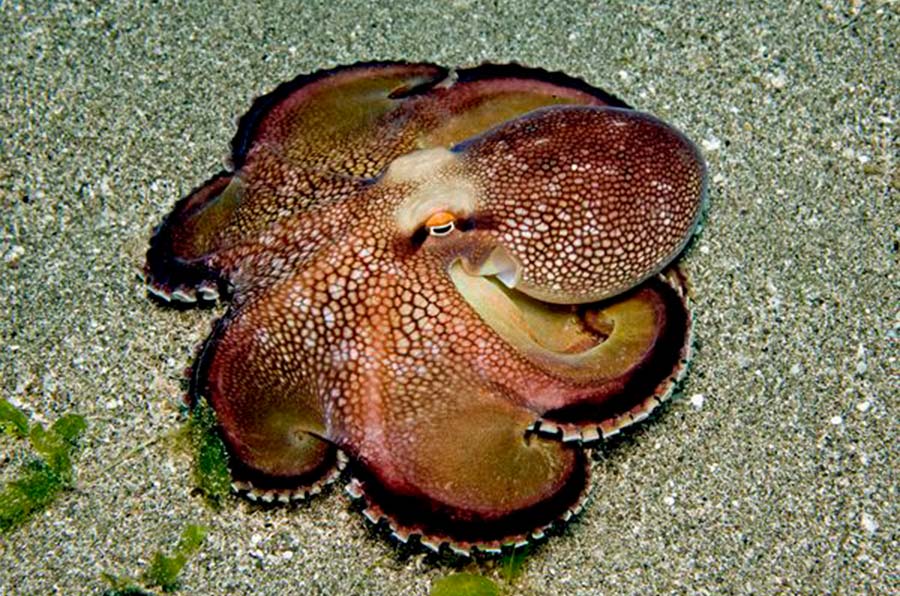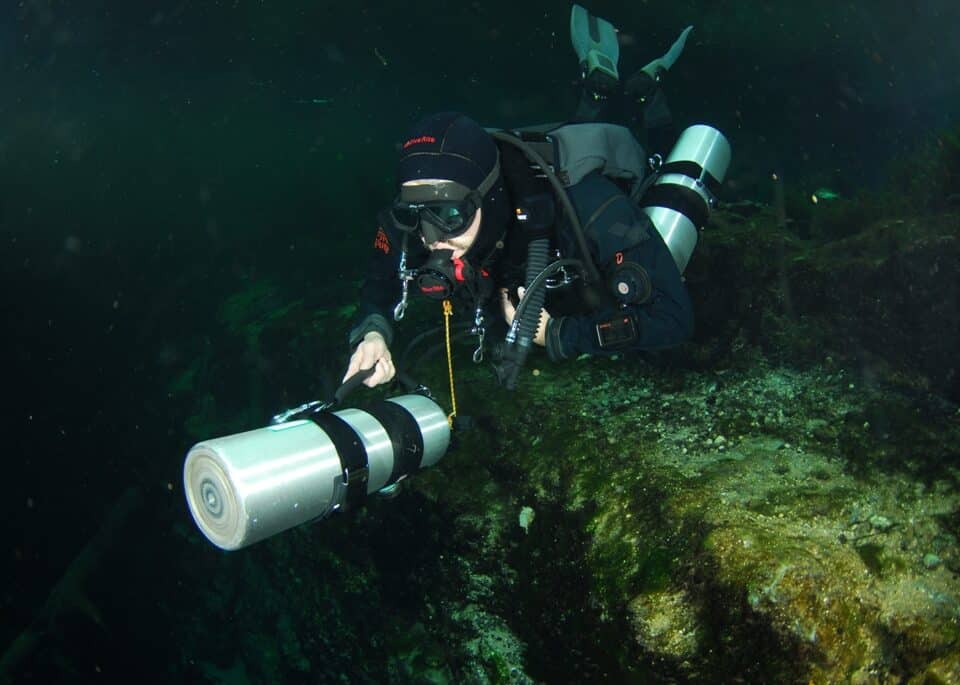Life of An Octopus
11. Octopus Life Cycle
Males must create small sperm packets called spermatophores and transfer them to females via a modified arm that they use as a sexual organ.
Females can store the sperm of multiple males for months before using it for fertilization. The embryonic development lasts up to 4 months, and after hatching, thousands of small “paralarvae” emerge into the water with jaws and teeth to hunt.
They travel through the ocean thanks to the currents and can remain in the water column for upto 3 months before settling on the bottom as juveniles.
12. Common Octopus Lifespan
As the common octopus’s life cycle completes in a single reproductive event, its lifespan lasts only for a year or a year and a half.
After the female lays eggs, her attention is solely focused on their care. This emphasis on breeding leads to a decrease in food intake and ultimately death by starvation. This pattern of “programmed suicide” also seems to occur in males, who stop feeding once they reach their expected maximum age.
13. Octopus Predators
The octopus has several natural predators, some of which include sharks and other large fish such as tuna and swordfish. Some seabirds, such as seagulls and cormorants, hunt octopuses by diving into the water to catch them when they swim near the surface.
Whales, dolphins, and seals also eat octopuses, and of course, another predator is humans. The location and species of the octopus determine which predators it will have to face.
The octopus is most vulnerable when it is young, as it lives near the surface of the water and can be easily hunted by other animals. Incredibly, over two-thirds of young octopuses can be eaten in the first few weeks of life! That’s why, even though a female octopus can lay more than 200,000 eggs, most of them don’t survive to adulthood due to the number of predators they face.
Octopuses have to be very alert and take care to survive in their habitat.
14. Octopus Adaptations
Thank goodness for the expert defense tactics of octopuses! When they feel threatened, these creatures can bite hard and release paralyzing venom.
They have the ability to camouflage and hide in small spaces to evade predators.
If that doesn’t work, they can release ink to disorient their attackers. It’s like they carry their own defense kit!
Moreover, some octopuses have the astonishing ability to change color to blend in with their environment, and there is even a species, the mimic octopus, that can mimic the physical appearance and behavior of over fifteen different species.




